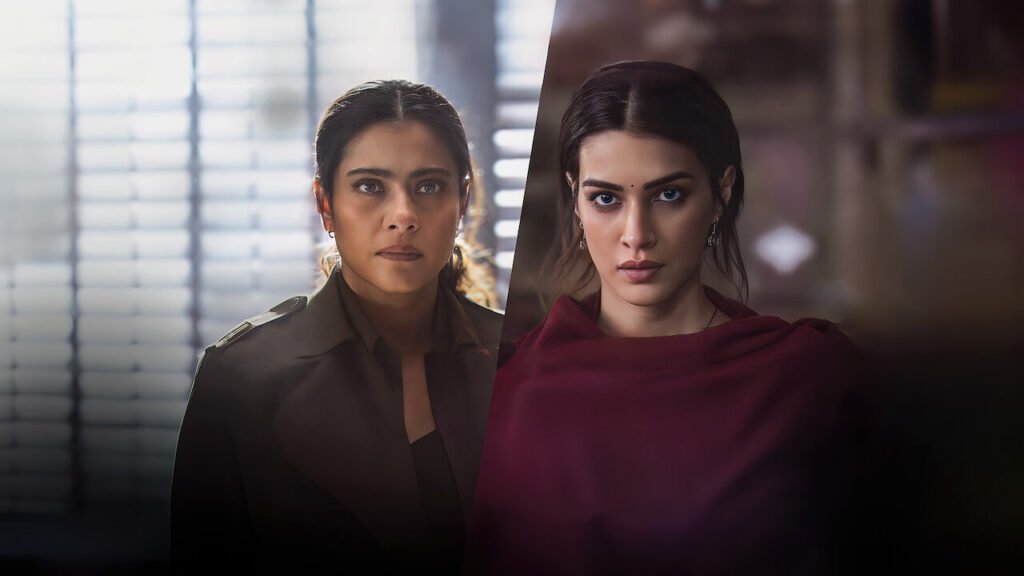Kanika Dhillon’s Do Patti stirred conversations with its bold portrayal of female characters, but it left audiences divided over its approach to feminism. While some viewers admired its unfiltered celebration of womanhood, others felt the story leaned heavily on over-glorifying casual feminism, often at the expense of nuanced storytelling. As fans anticipate a potential sequel, the question arises: will Dhillon continue down the same path, pushing Kriti Sanon’s character further along the same lines? Or will she deliver a more balanced narrative, one that focuses on depth and dimension over agenda?

With Kriti Sanon potentially reprising her role, Dhillon has the opportunity to either continue amplifying her signature style or shift to a storyline that digs deeper into the characters’ journeys without relying heavily on gender politics. The sequel could explore the strength of the protagonists in a way that feels authentic and resonant, or it could risk alienating audiences who crave substance over statements.
Do Patti: Mixed Responses Spark Talks of a Sequel and the Feminism Debate
Do Patti, the recent Netflix thriller starring Kriti Sanon, Kajol, and Shaheer Sheikh, has sparked strong reactions from audiences and critics alike. While some praised it as a brilliant thriller, others found the plot somewhat predictable. However, one thing both fans and critics agreed on was that this film marked a high point in Kriti Sanon’s career, showcasing some of her best acting to date. Although the story did not conclude with a cliffhanger, it left plenty of unresolved issues, naturally leading to speculation about a sequel.
The plot revolves around twin sisters, portrayed by Kriti Sanon and Kajol, who are caught in a complicated love triangle involving a character played by Shaheer Sheikh. Kanika Dhillon’s screenplay delves into intense issues such as emotional and physical abuse, domestic violence, jealousy, sibling rivalry, and mental health struggles. Yet, some felt that Dhillon’s portrayal of feminism could have been more nuanced, as the focus on “casual feminism” left room for debate. In anticipation of a potential sequel, audiences are left wondering: will Dhillon’s feminist lens deepen, or might we see a shift to a more balanced approach?
Feminism or Fiction: Where the Line Blurs
The idea of feminism is rooted in advocating for gender equality and supporting women’s rights. But as perspectives on feminism evolve, it’s essential to maintain a balanced narrative. Unfortunately, Do Patti faced criticism for its portrayal of a certain brand of “casual feminism” that, at times, seemed to blur the line between standing up for women’s rights and shifting into an imbalanced portrayal of gender dynamics. This approach can easily be misunderstood and may risk sending a message that isn’t universally relatable.
In Do Patti, the characterizations seem rooted in seeking revenge for male wrongdoing in a way that could seem oversimplified to some audiences. By focusing heavily on avenging wrongdoings without fully exploring the consequences of the characters’ actions, the story risks losing its grounding in realism. Dhillon’s attempt to address a range of societal issues is commendable, yet it may have been more impactful had it struck a better balance in portraying both male and female experiences, rather than relying primarily on a narrative of retribution.

Finding Feminism’s True Essence
Feminism, in its essence, is about striving for equality rather than superiority of one gender over another. In real life, equality means that all individuals are respected and valued, regardless of gender. However, in Do Patti, the portrayal sometimes skews toward a narrative where women’s empowerment seems to come at the expense of men, leading to questions about what the ultimate goal of such a portrayal might be.
When it comes to fictional portrayals, writers face the challenge of presenting feminist themes without over-simplifying the message. The line between advocating for women’s empowerment and pushing for a one-sided form of justice can be thin. While Do Patti addresses important themes, its approach risks being misinterpreted as portraying women’s strength only in opposition to men, rather than a broader view of equality and partnership.
The Need for Balance in the Sequel
A sequel to Do Patti could offer the opportunity for Kanika Dhillon to further develop the characters and offer a more balanced perspective. Through a more grounded exploration of themes like equality, mutual respect, and genuine empowerment, the story could resonate more broadly. For instance, the character of Kriti Sanon, who showed so much strength in her performance, could be further developed in a way that focuses on resilience and growth without needing to frame it solely as a battle against male characters. This shift would not only deepen the narrative but also create a more relatable journey that reflects both the challenges and the victories of all characters involved.
There’s also room to expand on the other themes touched upon in Do Patti, such as mental health, sibling rivalry, and the impact of abuse. By delving into these areas with greater nuance, the sequel could enrich the story’s emotional depth. Characters facing struggles and overcoming personal battles without framing it solely in terms of gendered conflict could make for a more relatable and empowering narrative.
Redefining Feminism in Storytelling
In recent years, storytelling in media has evolved, with audiences increasingly favoring narratives that promote inclusivity and balance. As viewers look to film and television for both entertainment and inspiration, it’s crucial that feminist themes in stories are both empowering and balanced. Stories that showcase women’s empowerment through resilience, intelligence, and integrity resonate well without needing to position men solely as antagonists. Portraying feminism through equality and partnership not only aligns more closely with the true essence of feminism but also allows for more universal storytelling that appeals to diverse audiences.
For Dhillon, this might mean taking a step back to evaluate how the story is framed, focusing less on a one-sided view of empowerment and more on character-driven growth. By creating a sequel that explores feminism as a movement for equality rather than retribution, Do Patti could set a positive example of balanced storytelling.
Moving Toward a Unified Storytelling Approach
A successful sequel could look beyond the “us vs. them” mentality and present a more unified approach to gender dynamics. By focusing on themes of empathy, resilience, and shared struggles, the story could become a bridge for understanding, where characters find empowerment not just through defiance but also through understanding and growth. Through such an approach, Do Patti could transcend its current portrayal and present a more universal perspective on feminism and gender equality, providing a story that speaks to everyone.
In exploring the characters’ complexities, Do Patti’s sequel could create a sense of shared humanity that resonates beyond gender. By focusing on universal themes like love, family, and personal growth, the film would appeal to audiences who relate to these experiences on a human level, rather than through the lens of gender conflict alone.

A Feminism That Embraces Equality and Empathy
Do Patti can take the opportunity to redefine its feminist narrative in a way that embraces empathy, equality, and authentic representation. Rather than portraying feminism as a battle or a form of retribution, a sequel could focus on the inherent value of each character’s journey, capturing both their strengths and flaws. This approach not only makes for more well-rounded characters but also aligns with the true values of feminism as a movement for equality, inclusion, and understanding. By showcasing feminism through empathy and mutual respect, Do Patti could resonate with a wider audience while staying true to its empowering message.
The potential for a sequel offers a chance for Kanika Dhillon to reshape the narrative in a way that honors the struggles and triumphs of all characters, creating a story that inspires through its commitment to equality and humanity. By presenting feminism as a means for positive change and unity, Do Patti could lead by example in promoting a message of balance and compassion.
In moving beyond casual portrayals of feminism and diving deeper into the characters’ personal growth, the film could pave the way for a sequel that not only entertains but also inspires a more nuanced understanding of feminism.
Stay tuned to Club4Celebs for more updates.


